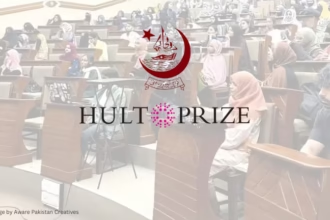In the digital age, media serves as a bridge between people and the world, providing insights into events, ideas, and experiences from across the globe. One particular area where media plays a crucial role is in the coverage of cultural events. These events, ranging from art exhibitions to festivals, concerts, and theater performances, are celebrated for showcasing the richness of human creativity and diversity. However, how cultural events are reported and represented often varies significantly between global and local news channels. The divergence in coverage offers insights into differing perspectives, priorities, and influences that shape media narratives. This article explores the distinctions between global and local media coverage of cultural events, focusing on scope, context, representation, and depth of analysis.
Global news channels like CNN, BBC, and Al Jazeera have a vast audience and are generally focused on appealing to a broad, diverse viewership. Their coverage of cultural events often highlights major, internationally recognized events such as the Cannes Film Festival, the Venice Biennale, or global music awards like the Grammys. These events have widespread appeal and can attract viewers from various parts of the world.
For global media, the scope of coverage tends to focus on events that have cross-cultural resonance or those that can be marketed as significant on the world stage. The objective is often to present a narrative that emphasizes universality, celebrating events that transcend national borders and appeal to a global audience.
In contrast, local media channels tend to focus on cultural events that are specific to a particular region or community. For example, local news in New Orleans might give detailed coverage of Mardi Gras, while a regional news outlet in India might provide in-depth reporting on local Diwali celebrations or a state-sponsored arts festival. Local media prioritize events that have a direct impact on the local audience, offering coverage of community festivals, regional theater performances, and local art exhibitions.
Local news channels often prioritize these events not just because of their immediate relevance to the audience but also because they reflect the unique cultural identity of the region. Such coverage is more likely to include elements of local pride and an understanding of the historical, social, and cultural significance of the events.
Given their broad reach, global news channels face the challenge of balancing cultural sensitivity with the need to appeal to a diverse audience. This often leads to more generalized coverage of cultural events, with less emphasis on specific local customs, traditions, or nuances. Instead, the focus is often on high-profile elements of the event or on personalities that have global recognition, such as famous actors, musicians, or artists.
This broad-strokes approach can sometimes lead to a lack of deep cultural context. For instance, a global news outlet covering a traditional Japanese tea ceremony might emphasize the visual aspects of the ceremony but may not delve into the intricate cultural meanings and historical significance behind the practice. This is because global media must cater to an audience that may not have an in-depth understanding of the cultural intricacies of a specific region.
Local news channels, on the other hand, are deeply embedded within the communities they serve and are better equipped to provide context and cultural sensitivity in their coverage. They are often more familiar with the local customs, history, and significance of cultural events, allowing them to present more nuanced and detailed reporting.
For example, a local news outlet covering a regional harvest festival might explore the event’s historical roots, its impact on local agriculture, and its role in fostering community spirit. Local reporters may interview key figures within the community, such as elders or cultural leaders, offering insights that may be overlooked by global media.
One of the main criticisms of global media coverage of cultural events is the tendency to focus on elite or mainstream aspects of culture, often sidelining lesser-known or niche cultural expressions. Global media tends to prioritize events that are marketable on a large scale, which can sometimes result in a skew.
The fast-paced nature of global news often means that cultural events are covered in brief, high-level reports. While these reports may provide key details and a general sense of the event, they typically lack in-depth analysis or exploration of the underlying cultural, social, or political significance of the event. For global media, the goal is often to provide a quick snapshot of the event rather than a deep dive into its meaning.
Additionally, global media may frame cultural events within broader geopolitical or economic contexts, especially if the event has international significance. For instance, a global news channel covering the Beijing International Film Festival might discuss the event in relation to China’s growing influence in global cinema or its cultural diplomacy efforts. While this adds an important layer of analysis, it may also overshadow the purely cultural aspects of the events.
Local media, with its narrower focus, is often able to provide more in-depth coverage of cultural events. This includes detailed interviews with artists, performers, and participants, as well as analysis of the event’s significance within the local community. Local reporters can explore the historical roots of the event, its evolution over time, and its impact on local traditions, identity, and social cohesion.
Furthermore, local media is more likely to engage with the cultural, political, and economic dimensions of an event on a micro level, offering interpretations that resonate with the lived experiences of the local audience. This depth of analysis helps to foster a deeper understanding of the event’s significance and ensures that the cultural event is seen not just as entertainment, but as a vital part of the community’s fabric.
Global media outlets are often driven by commercial imperatives, such as the need to attract large audiences and advertisers. As a result, their coverage of cultural events can sometimes be influenced by what will generate the most viewership or clicks. High-profile, celebrity-studded events like the Oscars or the Met Gala, for instance, receive extensive coverage because they are likely to attract a global audience and sponsors.
There may also be political factors at play in global media coverage. Certain cultural events might be highlighted or downplayed depending on the political stance of the media outlet or the countries they are covering. For example, global news channels may frame coverage of cultural events in politically sensitive regions through the lens of current political tensions, shaping the way these events are perceived by the global audience.
While local media outlets are also subject to commercial pressures, their financial models often differ, relying more on regional advertising or public funding. This allows for more flexibility in choosing which cultural events to cover. Local media may focus on events that, while not as commercially appealing on a global scale, are vital to the local culture and community. The result is a more authentic reflection of the community’s values and interests.
However, local media is not immune to political influence either. Coverage of cultural events might be swayed by local political dynamics, such as the relationship between media outlets and government or influential community leaders. For instance, a local festival funded by a political party may receive favorable coverage, while events organized by opposition groups might be downplayed or ignored altogether.
The relationship between global media outlets and their audience is generally more impersonal. Viewers or readers consume content from a distance, and their feedback is often limited to online comments, social media interactions, or general viewership trends. This creates a one-way communication model where global media channels provide content but may not engage with audience reactions in a meaningful way.
When global media covers cultural events, there’s often less direct interaction with the community involved in the event, leading to a gap in understanding the local sentiments and responses to the coverage. For example, a global news report on a local art exhibition in Lagos might fail to capture the nuances of how the local community perceives the event, because there is limited opportunity for the audience to engage with or influence the coverage.
Local media, by contrast, is much more embedded within the community and often enjoys a closer relationship with its audience. Local journalists may attend cultural events in person, providing firsthand accounts and engaging directly with participants and viewers. This fosters a two-way communication model where audience feedback plays a more significant role in shaping the coverage.
For instance, local media may receive letters, calls, or social media messages from community members who attended a cultural event, offering their perspectives and critiques. This interaction allows for more responsive and reflective coverage, ensuring that the portrayal of cultural events aligns more closely with how they are experienced by the local population.
The differences in media coverage of cultural events between global and local news channels reflect broader differences in priorities, audiences, and resources. While global media offers wide-reaching coverage of high-profile events, it often sacrifices depth and cultural specificity for broad appeal. In contrast, local media provides a more intimate and detailed look at cultural events, rooted in the unique identity and experiences of the community it serves.
Ultimately, both forms of media play important roles in shaping how cultural events are perceived and understood. Global media offers a platform for cultural events to gain international visibility, while local media ensures that the cultural richness of a community is preserved, celebrated, and understood in all its complexity. For a comprehensive understanding of culture, it is essential to engage with both global and local media perspectives.

